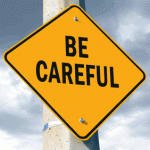3 Warning Signs An ETF Might Not Be Right For You
 There’s no question that ETFs have exploded in popularity. In just 20 years time, the industry has grown from a single ETF – the SPDR S&P 500 ETF (SPY) – with a mere $6.5 million in assets to over 1,400 ETFs holding more than $1.4 trillion in assets.
There’s no question that ETFs have exploded in popularity. In just 20 years time, the industry has grown from a single ETF – the SPDR S&P 500 ETF (SPY) – with a mere $6.5 million in assets to over 1,400 ETFs holding more than $1.4 trillion in assets.
And it’s not hard to understand why.
ETFs offer the diversification of a mutual fund combined with a stock’s ability to trade intraday. They tend to cost a lot less than mutual funds. And most ETFs give investors greater control over their potential tax liabilities.
With that said, not all ETFs are created equal.
You can’t just choose an ETF based on its name or stated investment objective. You have to do your due diligence before you buy. A few simple inquiries will go a long way toward making sure you purchase a quality ETF.
To help you with your research, I’ve identified three early warning signs that an ETF might not be all it’s cracked up to be.
Early Warning Sign #1: The ETF is Thinly Traded
A thinly traded ETF is one with very low average daily share volume. This is a potential problem because a lack of liquidity can lead to wide spreads between an ETF’s bid and ask prices.
And the wider the spread, the bigger the hit to your returns every time you buy and sell.
Your best bet is to stick with the more heavily traded ETFs. These have bid-ask spreads of just a penny or two. So, you won’t find yourself in a hole the minute you buy it.
Early Warning Sign #2: The ETF Carries A High Expense Ratio
One of the main benefits of investing in ETFs is that they tend to cost less than mutual funds. According to Morningstar, the average mutual fund charges 1.4% while the average ETF charges just 0.44%.
However, there are ETFs that charge annual fees of 1%, 2%, or even more.
As such, it’s very important to check an ETF’s expense ratio before you buy it. All things being equal, you’re better off purchasing the ETF with lower annual expenses.
Remember, the higher the expense ratio, the bigger the drag it will have on your investment returns.
Early Warning Sign #3: The ETF’s Price And Net Asset Value Are Different
Sometimes you’ll find an ETF trading at a market price that’s higher or lower than its net asset value (NAV). It’s not necessarily a bad thing, but you need to be aware of it before you buy.
An ETF with a market price above its NAV is trading at a premium. And conversely, an ETF with a market price below its NAV is trading at a discount.
What’s the big deal?
When you buy an ETF at a premium, you’re essentially paying more than the total value of the ETF’s holdings. And when you sell an ETF that’s trading at a discount, you’re getting less than the total value of its holdings.
Here’s the key…
The specific amount of an ETF’s premium or discount doesn’t matter by itself. It’s how the premium or discount moves during the time you own the ETF that’s important.
A decline in the premium or a broadening of the discount could cost you money.
If you must own an ETF that’s trading at a premium or discount to NAV, your best bet is to use a limit order when making your trades. This type of order will ensure you don’t pay more or receive less than you want for the ETF.
The bottom line…
ETFs are terrific investment vehicles for achieving your financial goals. However, like any investment, they do have a few flaws. Keep an eye out for these early warning signs and you should have no problem avoiding the potential traps that so often snag unsuspecting investors.
Profitably Yours,
Robert Morris
Category: ETFs




